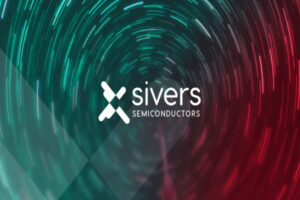Sivers Semiconductors declared that it has signed a non-binding letter of intent (the “LOI”) with byNordic Acquisition Corporation to integrate Sivers Photonics Ltd. (“Sivers Photonics”). After the de-SPAC procedure is finished, the proposed merger would establish a stand-alone, publicly traded photonics firm that will be backed by sizeable cash reserves.
Currently, Sivers is made up of two separate wholly-owned subsidiaries that serve the wireless and photonics markets. One of the most cutting-edge suppliers of semiconductor photonic devices worldwide is the Sivers Photonics division. Sivers Photonics creates customizable lasers targeted at high-growth artificial intelligence infrastructure and sensing applications for data centers, consumer healthcare, and automotive LIDAR, with an emphasis on indium phosphide (InP) laser sources.
With 80 employees, including 12 PhDs, the Sivers’ Photonics subsidiary has created a distinctive portfolio of technologies supported by more than 25 years of research and development.
Three granted patents and sixteen pending patents in the US, UK, Canada, and the World Intellectual Property Organization belong to the company. Furthermore, Sivers Photonics is in talks with a number of top AI firms, including hyperscalers, and presently holds development contracts to provide distinctive, high-performance lasers for a number of top SiPh suppliers, including Ayar Labs, revealed its official release.
The portfolio of Sivers’s leading products in mmWave beamformer front-end integrated circuits, RF transceivers, repeaters, and software algorithms for optimal mmWave RF performance for satellite and 5G infrastructure will comprise the company’s remaining wireless business following the proposed spin-off and Sivers Photonics merger combination. In 2023, the net revenue of wireless businesses increased by 155%, or around $15 million. These markets are growing quickly, and Sivers has won several contracts and design victories that should result in a notable increase in product sales over the next three to five years.
The Growing Demand of GPUs in GenAI
Industry research indicates that the number of GPUs sold for generative AI will increase significantly to about 18 million units. Based on these sales, management projects that by 2027, there will be a $5 billion total addressable market for chip-to-chip connectivity, with up to $1 billion of that being served. It is anticipated that the need for Artificial Intelligence applications will necessitate drastic increases in processing power and energy usage.
Eliminating Bottlenecks for Generative AI in Data Centers
By the end of the decade, data centers may consume up to 9% of all electricity produced in the US, more than tripling present consumption, according to Electric Power Research Institute. The best way to eliminate bottlenecks for generative AI in data centers is to apply silicon photonics, or SiPh, which can provide chip-to-chip connectivity at a substantially lower energy usage. In comparison to copper wire alternatives, SiPh transports data using light rather than electrons, which leads to quicker data transmission, lower latency, and up to a 90% reduction in power consumption.
Photonic Lasers Designing Innovative Wearables
Furthermore, novel wearable healthcare products are being made possible by consumer biometric sensors that use photonic lasers for monitoring human biometrics and point-of-care applications, in addition to tracking personal fitness. A single client has paid Sivers Photonics more than $18 million in development contracts over the last five years in order to improve and optimize lasers for biometric sensors. Even though this sector is still in its infancy, Sivers Photonics’ extensive R&D experience has given them a distinct competitive edge in providing advanced photonic bio-sensors to this expanding industry.
Key Comments
“We believe the potential for AI Photonics is immense yet overshadowed by the equally exciting Sivers’ Wireless business unit. With the attractive opportunity for silicon photonics in AI infrastructure and the emerging demand for photonic biometric sensors, we feel now is the right time to shine a light on this business unit as a standalone entity to gain access to the U.S. capital markets and create an opportunity for our shareholders to participate in its potential future success,” said Bami Bastani, Sivers Semiconductor Chairman.”
“At the same time, we also look to capitalize on the success of the Sivers’ Wireless business unit and the demand for our leading-edge mmWave beamformer solutions for satellite and 5G, which has gained substantial traction with customers in these developing markets over the last several years, enabling us to create a fully fabless and less capital-intensive company that will remain listed under Sivers Semiconductors AB, adds Bami.“
Sivers Photonics will be able to connect with more investors, clients, and partners in the US AI ecosystem as a result of this transaction, which is anticipated to unlock considerable value and establish an independent U.S.-listed corporation. At the moment, the United States accounts for about 80% of Sivers Photonics’ net revenue.
ByNordic and Sivers plan to finalize a deal for byNordic to acquire Sivers Photonics in accordance with the conditions of the non-binding LOI.




